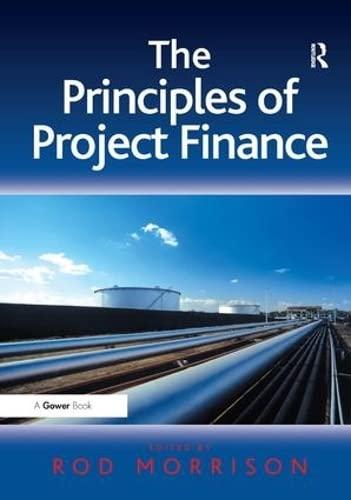You are trying to estimate the cost of equity for a privately owned railroad company called the Illinois-Pacific Railroad. You know that the company's cost of debt is 4% and its debt-to-enterprise value ratio is 30%. You have collected the following information on publicly traded railroads that are comparable. All of these railroads have no excess cash. You also know that the risk-free rate is 2% and the market risk premium in 5%. Which of the following statements is true? Select one.
| Company | Beta | Market Capitalization (in $ billions) | Market Value of Debt (in $ billions) | Cost of Debt |
| UNP | 1.05 | 133.20 | 24.70 | 3.0% |
| CSX | 1.21 | 59.40 | 16.30 | 3.2% |
| NSC | 1.38 | 54.70 | 12.20 | 3.1% |
| KSU | 0.96 | 18.30 | 3.20 | 2.9% |
| | I. | You can calculate the cost of equity for the privately held railroad as the average cost of equity across the comparable firms because the privately held railroad has a similar debt-to-enterprise value ratio than the comparable firms. |
| | II. | You can always calculate the cost of equity for the privately held railroad as the average cost of equity across the comparable firms regardless of whether debt-to-enterprise value ratio of the private railroad is different from the one for the comparable firms. |
| | III. | You can not calculate the cost of equity for the privately held railroad as the average cost of equity across the comparable firms because the privately held railroad has a higher debt-to-enterprise value ratio than the comparable firms. |
| | IV. | You can not calculate the cost of equity for the privately held railroad as the average cost of equity across the comparable firms because the privately held railroad has a lower debt-to-enterprise value ratio than the comparable firms. |

Question 4 5 points Save Answer You are trying to estimate the cost of equity for a privately owned railroad company called the Illinois-Pacific Railroad. You know that the company's cost of debt is 4% and its debt-to-enterprise value ratio is 30%. You have collected the following information on publicly traded railroads that are comparable. All of these railroads have no excess cash. You also know that the risk-free rate is 2% and the market risk premium in 5%. Which of the following statements is true? Select one. Market Value of Company Beta Market Capitalization (in $ billions) Debt (in $ billions) Cost of Debt UNP 1.05 133.20 24.70 3.0% CSX 1.21 59.40 16.30 3.2% NSC 1.38 54.70 12.20 3.1% KSU 0.96 18.30 3.20 2.9% Ol. You can calculate the cost of equity for the privately held railroad as the average cost of equity across the comparable firms because the privately held railroad has a similar debt-to-enterprise value ratio than the comparable firms. O II. You can always calculate the cost of equity for the privately held railroad as the average cost of equity across the comparable firms regardless of whether debt-to-enterprise value ratio of the private railroad is different from the one for the comparable firms. III. You can not calculate the cost of equity for the privately held railroad as the average cost of equity across the comparable firms because the privately held railroad has a higher debt-to-enterprise value ratio than the comparable firms. O IV. You can not calculate the cost of equity for the privately held railroad as the average cost of equity across the comparable firms because the privately held railroad has a lower debt-to-enterprise value ratio than the comparable firms. Question 4 5 points Save Answer You are trying to estimate the cost of equity for a privately owned railroad company called the Illinois-Pacific Railroad. You know that the company's cost of debt is 4% and its debt-to-enterprise value ratio is 30%. You have collected the following information on publicly traded railroads that are comparable. All of these railroads have no excess cash. You also know that the risk-free rate is 2% and the market risk premium in 5%. Which of the following statements is true? Select one. Market Value of Company Beta Market Capitalization (in $ billions) Debt (in $ billions) Cost of Debt UNP 1.05 133.20 24.70 3.0% CSX 1.21 59.40 16.30 3.2% NSC 1.38 54.70 12.20 3.1% KSU 0.96 18.30 3.20 2.9% Ol. You can calculate the cost of equity for the privately held railroad as the average cost of equity across the comparable firms because the privately held railroad has a similar debt-to-enterprise value ratio than the comparable firms. O II. You can always calculate the cost of equity for the privately held railroad as the average cost of equity across the comparable firms regardless of whether debt-to-enterprise value ratio of the private railroad is different from the one for the comparable firms. III. You can not calculate the cost of equity for the privately held railroad as the average cost of equity across the comparable firms because the privately held railroad has a higher debt-to-enterprise value ratio than the comparable firms. O IV. You can not calculate the cost of equity for the privately held railroad as the average cost of equity across the comparable firms because the privately held railroad has a lower debt-to-enterprise value ratio than the comparable firms







